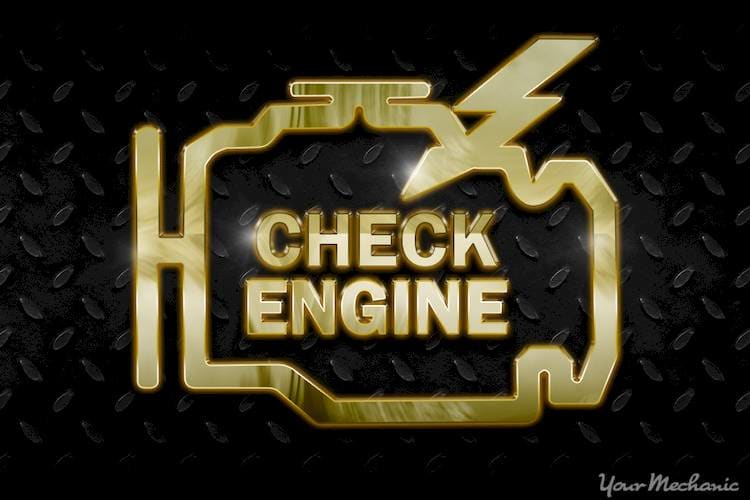P2049 code definition
Reductant Injector Circuit High Voltage Bank 1 Unit 1
What the P2049 code means
This code indicates there is a problem with the electrical circuit that controls the reductant injector.
What causes the P2049 code?
The reductant, or Diesel Exhaust Fluid (DEF), is sprayed into the exhaust stream by the reductant injector system to aid in the reduction of NOx (Oxides of Nitrogen). The Engine Control Module (ECM), or Powertrain Control Module (PCM), monitors the voltage at the reductant injector.
The strategy for monitoring the injection system differs from manufacturer to manufacturer. Most monitor the voltage over a period of time; usually a matter of seconds. If the voltage doesn’t change, or changes to much in a pre-programmed period of time, the ECM assumes there is a problem with the electrical circuit controlling the reductant injector.
What are the symptoms of the P2049 code?
- Check Engine Light
- Increased NOx from the tailpipe (the vehicle owner will not be able to detect this)
- Some manufacturers will force the vehicle into a reduced power mode
- There have been some reports of some drivability issues.
How does a mechanic diagnose the P2049 code?
A mechanic should start by confirming this code and determining if other codes present are contributing to the setting of this code. If other codes are present that can set this code, those codes should be addressed first.
After scanning the vehicle, it is necessary to replicate and/or confirm the problem that set the code. In this case, the technician should begin by monitoring scan tool data, searching for any data that is not within operating parameters. Usually the information necessary to determine the problem is apparent in the data. If for some reason this does not suffice, it will be necessary to visually inspect the reductant injector and perform a series of tests.
These tests will involve the use of a multimeter for direct testing of circuits controlling the reductant injector. This is often done in tandem with the scanner. The scanner will be used to command the reductant injection system on and off while the multimeter is used to confirm the readings that the ECM data shows.
Reductant injectors have a high occurrence of clogging. The reductant, otherwise known as Diesel Exhaust Fluid (DEF), is corrosive and is sprayed through the injector nozzle, which can cause damage to the injector nozzle over time.
Common mistakes when diagnosing the P2049 code
Not addressing other codes that can set this code first is likely the most common mistake. A simple thing like corrosion in the electrical connector at the reductant injector is easy to mis. The reductant injector is mounted in the exhaust system where high temperatures induce rust formation. In addition, the wiring to this sensor is under the vehicle exposed to the elements. It’s not uncommon for damage to occur from road debris.
How serious is the P2049 code?
The P2049 code is only as serious as the environmental damage the system is attempting to control. There have been reports that a failure in this system can cause some random drivability symptoms. I have not been able to confirm how this is occurring. This system should not affect the drivability of the vehicle.
What repairs can fix the P2049 code?
Replacing the reductant injector is the most common repair. Internal electrical failure and the clogging of the injector nozzle are the most common culprits. The DEF sprayed by the injector is highly corrosive and clogging of the nozzle in the injector frequently occurs.
Cleaning and/or replacing the electrical connector at the injector. The connector is under the vehicle and exposed to the elements, as well as being mounted to an exhaust system that is as hot as 1800℉.
Reprogramming the ECM. It is often the case that the ECM’s programming needs to be modified to recognize conditions the manufacturer was unable to anticipate.
The DEF itself can become contaminated and should be flushed and replaced with new DEF fluid.
The DEF system of which the reductant injector is a part of, is only installed on vehicles with diesel engines. The EPA (Environmental Protection Agency) phased-in its use from 2007 to 2010. DEF fluid is the most common terminology used to describe the fluid that is injected into the exhaust stream. The name used by the manufacturers is reductant, which is why it is called the reductant injector.
Reductant is injected into the exhaust stream before the catalytic converter. It aids the catalytic converter in the reduction of NOx (oxides of nitrogen). The converter must operate between 390℉ and 750℉ for the system to effectively reduce the emissions of NOx. This is just one factor in the process that requires the ECM to closely monitor what is happening at the catalytic converter. The temperature the catalytic converter begins to effectively reduce all exhaust emissions is referred to as the light off point.
The reductant systems for diesel powered vehicles is highly complex on many levels. There is chemistry, thermodynamics, electrical theory and computer programming involved. With this many disciplines involved, it is both hard for the manufacturer and mechanic to find easy and smooth methods of design and repair. The auto industry experienced this with the first introduction of emission in the late 70’s and 80’s. Since then, emissions systems on all vehicles have substantially improved. I expect the same will occur with NOx reduction systems.
Need help with a P2049 code?
YourMechanic offers certified mobile mechanics who will come to your home or office to diagnose and repair your vehicle. Get a quote and book an appointment online or speak to a service advisor at 1-800-701-6230.
Check Engine Light
Diesel
trouble codes
P2049





